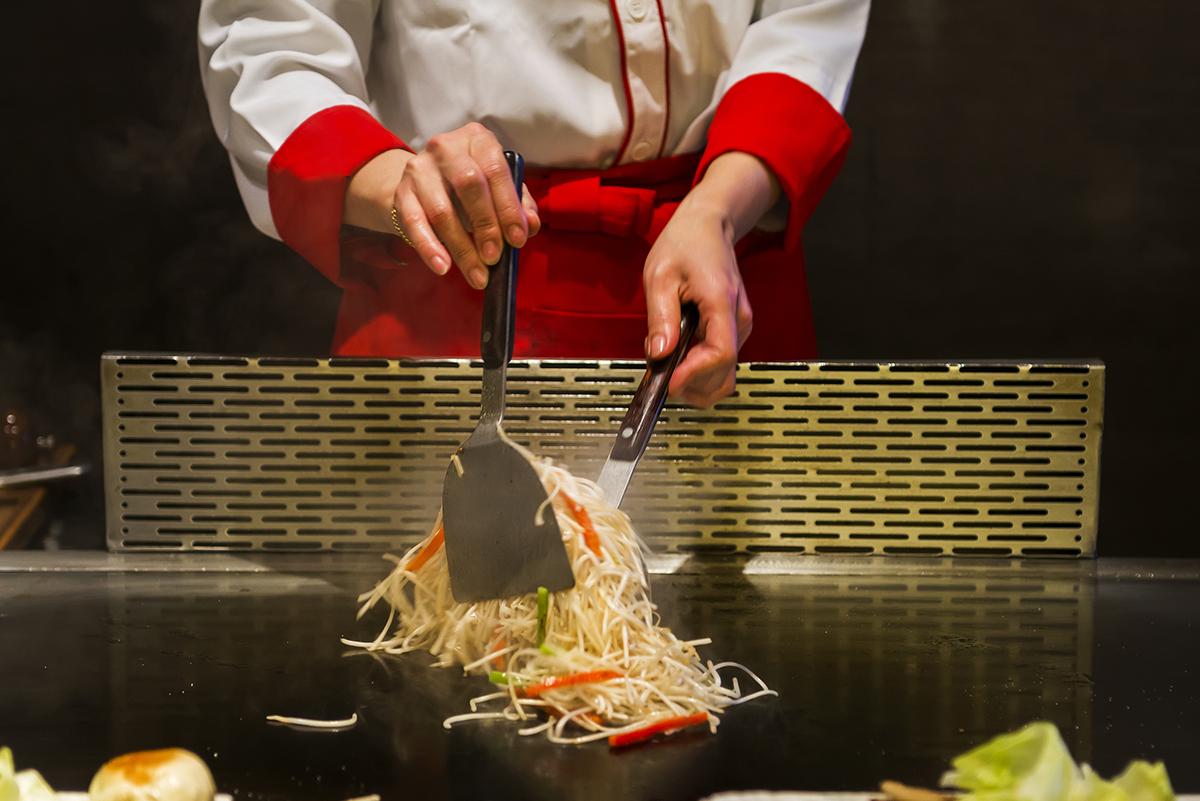Umami is the fifth taste, after sweet, salty, sour, and bitter. It means ‘savoury deliciousness’, which is usually associated with Japanese cuisine (eg dashi – a broth made of seaweed). Umami is also described as brothy, meaty, flavourful, and satisfying.
The pleasant savoury taste of umami is due to the amino acid glutamate and the nucleotides inosinate and guanylate. These occur naturally in foods such as meat, poultry, seafood, fruits, vegetables, dairy products, eggs, fermented products (soy sauce, bean paste), and green tea.
Japanese cuisine tends to combine these foods and different flavours to achieve the umami taste. Want to know what umami tastes like? Here are 10 combinations of delicious Japanese flavours to try for maximum umami.
1. Green tea and salmon
Green tea and salmon are both full of umami, so why not try the Smoking Green Tea Salmon at Kobe Jones. Seared, cold-smoked salmon is marinated in green tea and served on a bed of wasabi mash with nori cream, balsamic syrup, and autumn herbs. The whole dish is served in a Japanese cedar pot with apple wood smoke. Absolutely delicious.
2. Chocolate and vegetables
Chocolate and vegetables also give you a savoury taste, and what better way to get maximum umami than with Japan’s vegetable-flavoured Kit Kat. You’ll find apple-carrot flavoured sap squashed between the chocolate-covered wafers. Apples and carrots are packed with umami and low in calories, so give this popular confectionery a try for a delicious and (kind of) healthy way to appeal to your umami desire.
3. Miso soup and seaweed
Miso soup consists of miso paste made from soybeans, seaweed dashi, scallions, and tofu, which are rich with umami and give the soup a salty, savoury flavour. Since miso soup is high in sodium, the seaweed can help reduce sodium levels in your body. Our Miso Soup consists of house-made dashi with our own blend of red and white miso paste for creating the perfect umami flavour.
4. Tofu and bonito flakes
Tofu (mashed soybeans) and bonito flakes (dried, fermented, and smoked skipjack tuna) are high in umami-related compounds. Tofu topped with bonito flakes is usually served as a side dish to a traditional Japanese meal. Tofu has a lot of amino acids but lacks in methionine, which bonito flakes have. Amino acids help build muscle tissue, while methionine helps maintain hair colour as you age, among other benefits.
5. Green tea and anko (red bean paste)
While green tea is high in umami and has a bitter flavour, anko falls in the umami flavour category with a sweet taste. If you want to know what the combination of green tea and red bean paste tastes like, try our Flaming Anko at Kobe Jones. It’s made of green tea crème brulee with red bean and vanilla liqueur, and is served alight for a caramelised finish.
6. Chocolate and sweet potato
Satsuma-imo, or sweet potato, has high levels of umami. To get a taste of this savoury deliciousness, try Japan’s sweet potato-flavoured Kit Kat. Sweet potato is a popular street-vendor treat in Japan, so it makes perfect sense to add it to the line of limited edition flavoured Kit Kats. It comes in two colours: yellow and purple.
7. Green tea and tiramisu
What does green tea and tiramisu (coffee-flavoured custard dessert) taste like together? You can find out with our Kobe Jones Tiramisu, which is infused with green tea and sake, and is served semi-frozen. It’s also topped with chocolate shards and fresh strawberries, making for a refreshing umami dessert with a good contrast in flavours.
8. Pork cutlet and cabbage
Tonkatsu, or pork cutlet, is always served with shredded cabbage. And together they make a filling umami meal, which is perfect for when you’re very hungry. What’s more, cabbage is not only rich in umami, but also in vitamin U. This means it can prevent gastric hyperacidity, as in it’ll keep you from getting a stomach ache.
9. Cheese and yuzu jam
You’ll also find many umami components in cheese and yuzu. Yuzu jam or marmalade is made from Japanese yuzu citrus fruits, sugar, and water. It has a thick consistency with a sweet, tangy, and delightful taste. Cheese can be eaten with yuzu jam for a boost of umami and to give savoury fullness to dishes. Try our Goats Cheese with Yuzu Jam – fingers of Wattle Valley goats cheese served with yuzu jam for a jolt of rounded flavour.
10. Tuna and grated yam
It’s well-known that Japanese people love tuna, which is a healthy and major source of umami. Raw tuna is usually served with grated yam, making the dish more visually appealing and tasty too. The yam has a thick and sticky texture, which is due to the protein mucin. Mucin can help your body absorb the other proteins that tuna is rich in.
Feeling hungry?
Fill up on umami at Kobe Jones – we’re a Japanese restaurant offering plenty of delicious cuisine rich in umami. You can have lunch or dinner, or order takeaway seven days and seven nights a week. We look forward to serving you our food that will not only satisfy your hunger and your tastebuds, but leave you healthier too.
Most households have an unsolved Rubik’s Cube. You can esily solve it learning a few algorithms.







 (7 votes, average: 3.86 out of 5)
(7 votes, average: 3.86 out of 5)